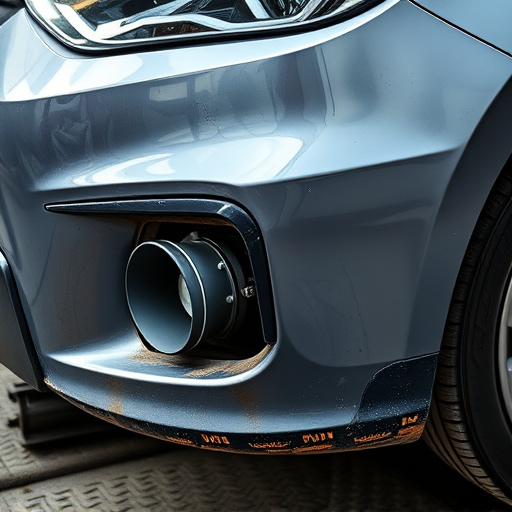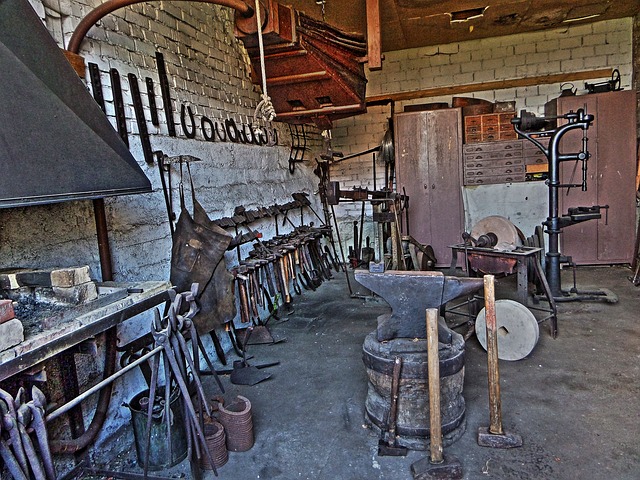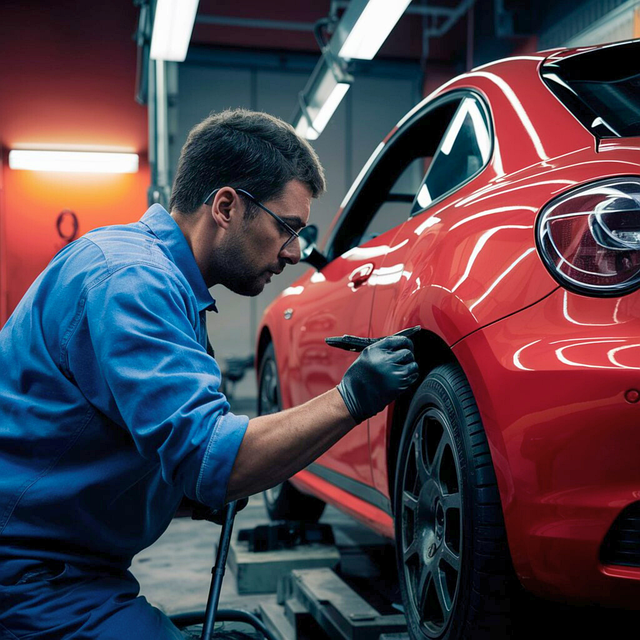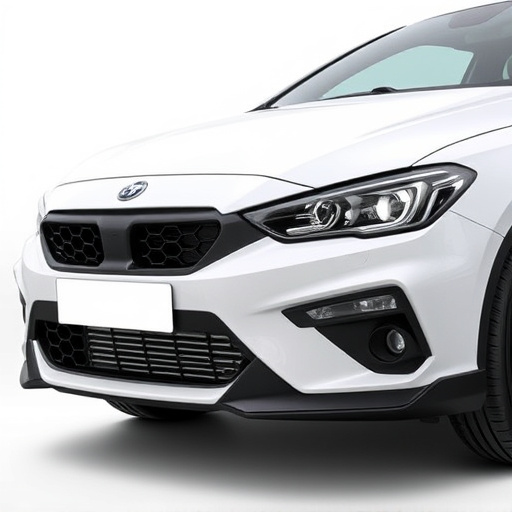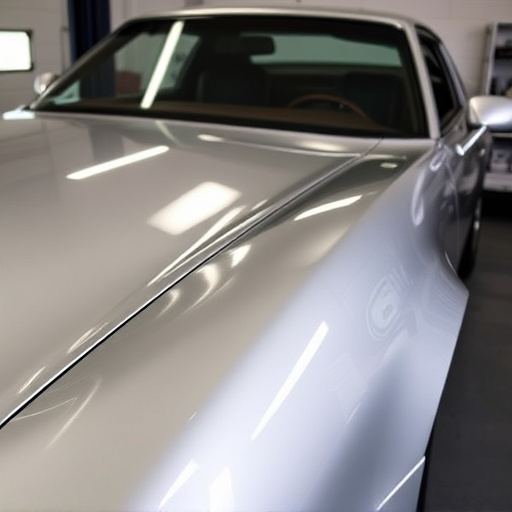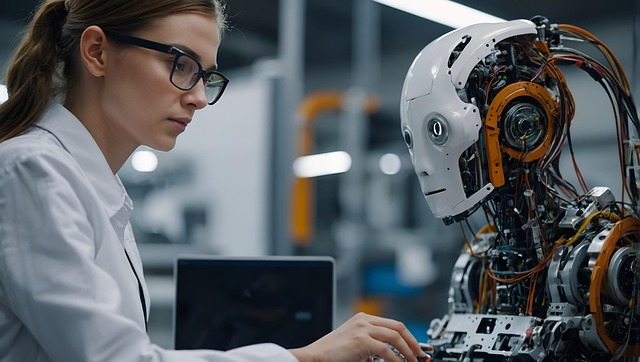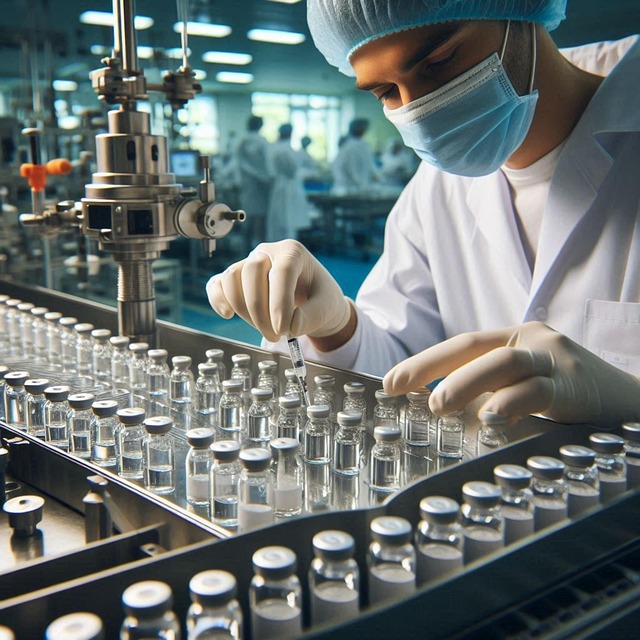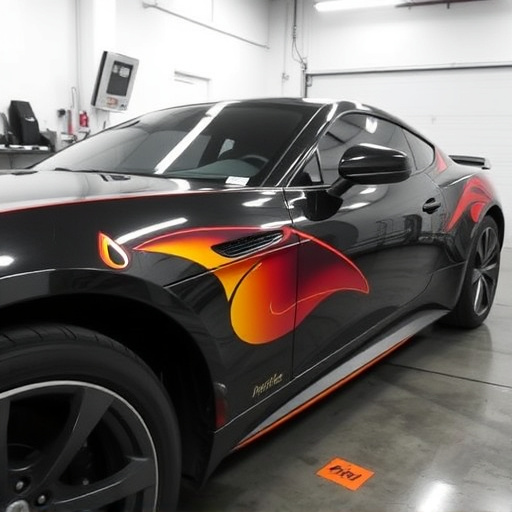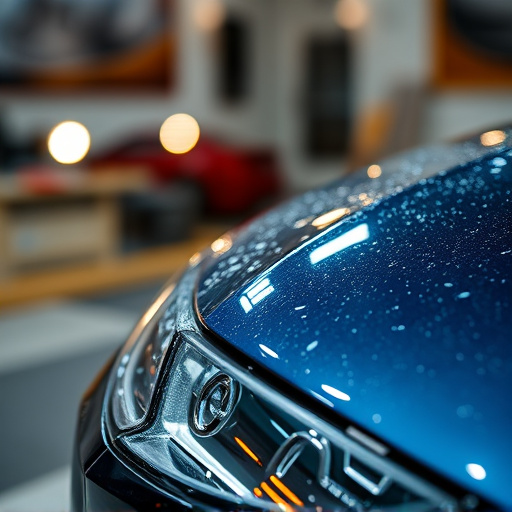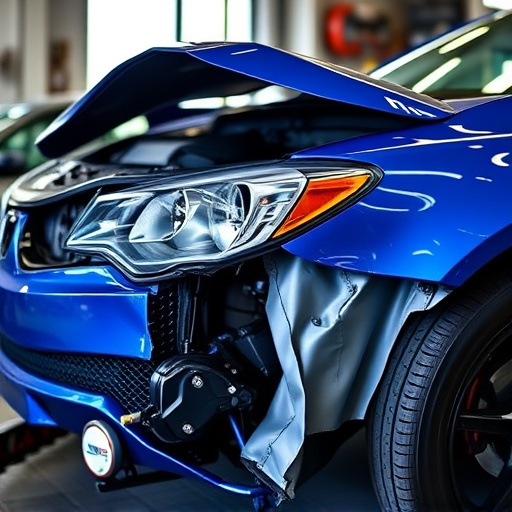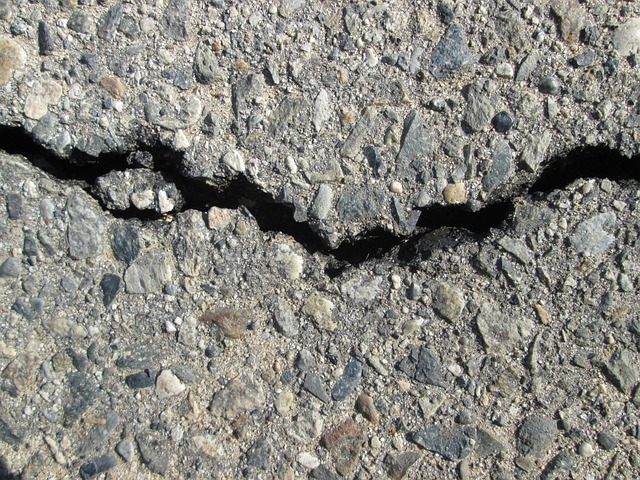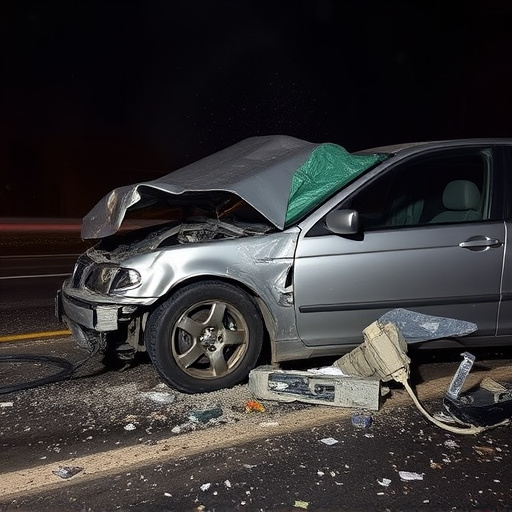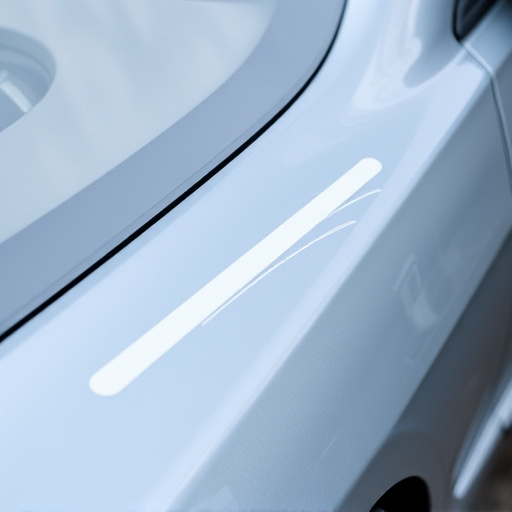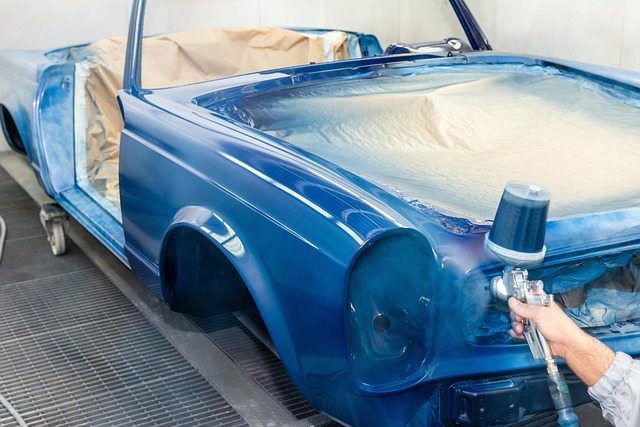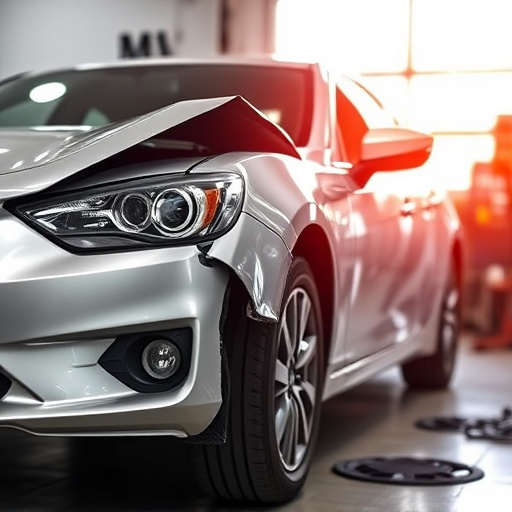Tesla paint thickness measurement is vital for exterior repairs, ensuring both aesthetic appeal and structural integrity. Professionals use advanced tools to accurately gauge paint depth, guiding decisions between blending minor dents/scratches or recoating extensive damage. Precision repair optimizes turnaround times, cost savings, and customer satisfaction by respecting Tesla's original finish.
Tesla owners often wonder about the best way to maintain their vehicle’s stunning finish. This article delves into the critical aspect of Tesla paint thickness measurement—a technique that goes beyond visual inspection. By understanding the paint’s depth, enthusiasts can make informed decisions between blending minor imperfections or recoating larger areas, ensuring a flawless and long-lasting exterior. We explore these processes, highlighting their advantages and role in optimizing vehicle repair and restoration.
- Understanding Tesla Paint Thickness Measurement
- Blending vs. Recoating: Key Differences Revealed
- Optimizing Repair and Restoration Process
Understanding Tesla Paint Thickness Measurement
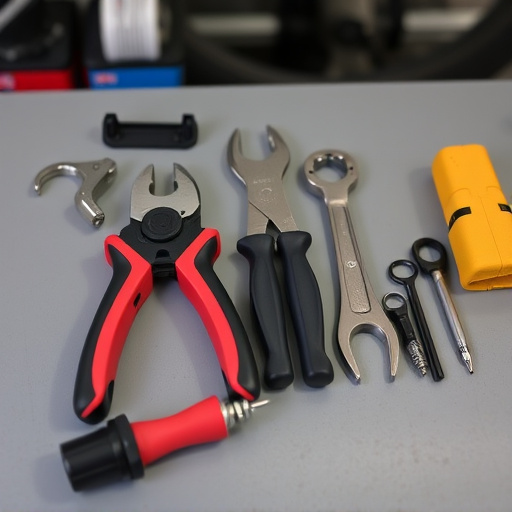
Tesla paint thickness measurement is a crucial aspect of maintaining and restoring the vehicle’s exterior. It refers to the precise evaluation of the paint layer’s depth, allowing car owners and repair professionals to ensure optimal cosmetic results. This technique has become increasingly important in the automotive industry, particularly for high-end brands like Tesla, where paint quality and consistency are paramount. By utilizing advanced measurement tools, technicians can accurately determine if a vehicle requires blending or recoating, which is essential in fixing minor damages, such as scratches or dents, without compromising the overall finish.
Understanding the paint thickness is vital not just for aesthetics but also for structural integrity. In cases of more severe car collision repair or car scratch repair, measuring the remaining paint layer helps decide whether a simple blending or a complete recoat is necessary. This process ensures that the repaired area seamlessly integrates with the rest of the vehicle’s body, preserving its value and ensuring long-lasting results. Car owners should be aware of these practices, especially when seeking top-notch car repair services to keep their Tesla’s paint job looking as good as new.
Blending vs. Recoating: Key Differences Revealed
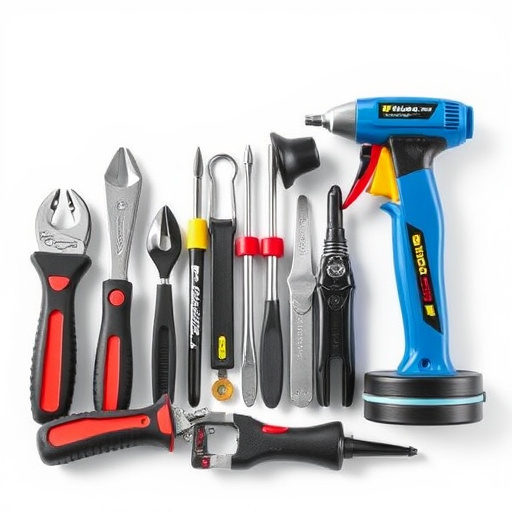
When it comes to Tesla paint thickness measurement, understanding the distinction between blending and recoating is paramount for maintaining your vehicle’s original finish. Blending focuses on repairing minor dents or scratches by smoothing out the affected area, ensuring seamless integration with the surrounding paint. This process involves carefully matching the color and texture, but it does not add significant new layers of paint.
In contrast, recoating involves applying a complete new layer of paint over the existing surface. This is typically recommended for more extensive damage, such as major dents, rust spots, or extensive repainting needs. Recoating offers a fresh finish, enhancing the vehicle’s aesthetic appeal and protective capabilities. Choosing between blending and recoating depends on the extent of the damage; auto collision centers and car repair services professionals can guide you in making an informed decision based on Tesla paint thickness measurement results.
Optimizing Repair and Restoration Process
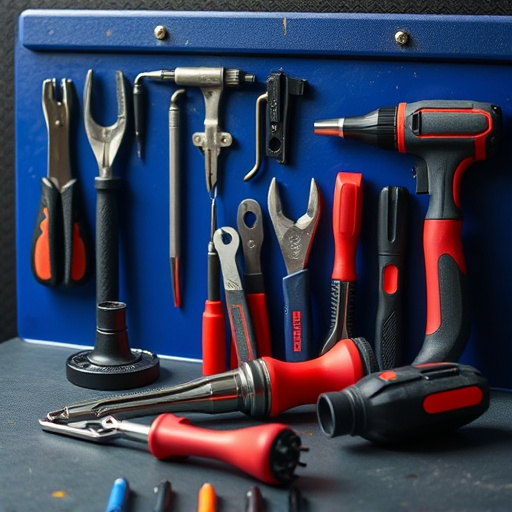
In the realm of automotive repair and restoration, especially for high-end electric vehicles like Teslas, precision is key. Utilizing advanced tools such as Tesla paint thickness measurement devices becomes an indispensable asset in achieving flawless results. By accurately measuring the paint’s depth, technicians can precisely determine if a scratch or dent requires mere blending or if a complete recoat is necessary. This not only optimizes the repair process but also ensures the car body shop delivers top-tier work that respects the vehicle’s original finish.
Furthermore, this meticulous approach translates into cost savings and faster turnaround times for clients. For instance, in cases of minor scratches or fender benders, proper paint thickness analysis can facilitate efficient scratch repair instead of a full repaint, saving both time and money. This level of detail not only enhances customer satisfaction but also underscores the car body shop’s commitment to excellence and its ability to navigate complex restoration challenges with ease.
Tesla paint thickness measurement is a game-changer in ensuring precision during vehicle repairs and restoration. By understanding this technology, technicians can accurately determine whether blending or recoating is required, optimizing the process for superior results. This innovative approach not only enhances the quality of repairs but also ensures that Tesla vehicles maintain their original finish and aesthetic appeal.
